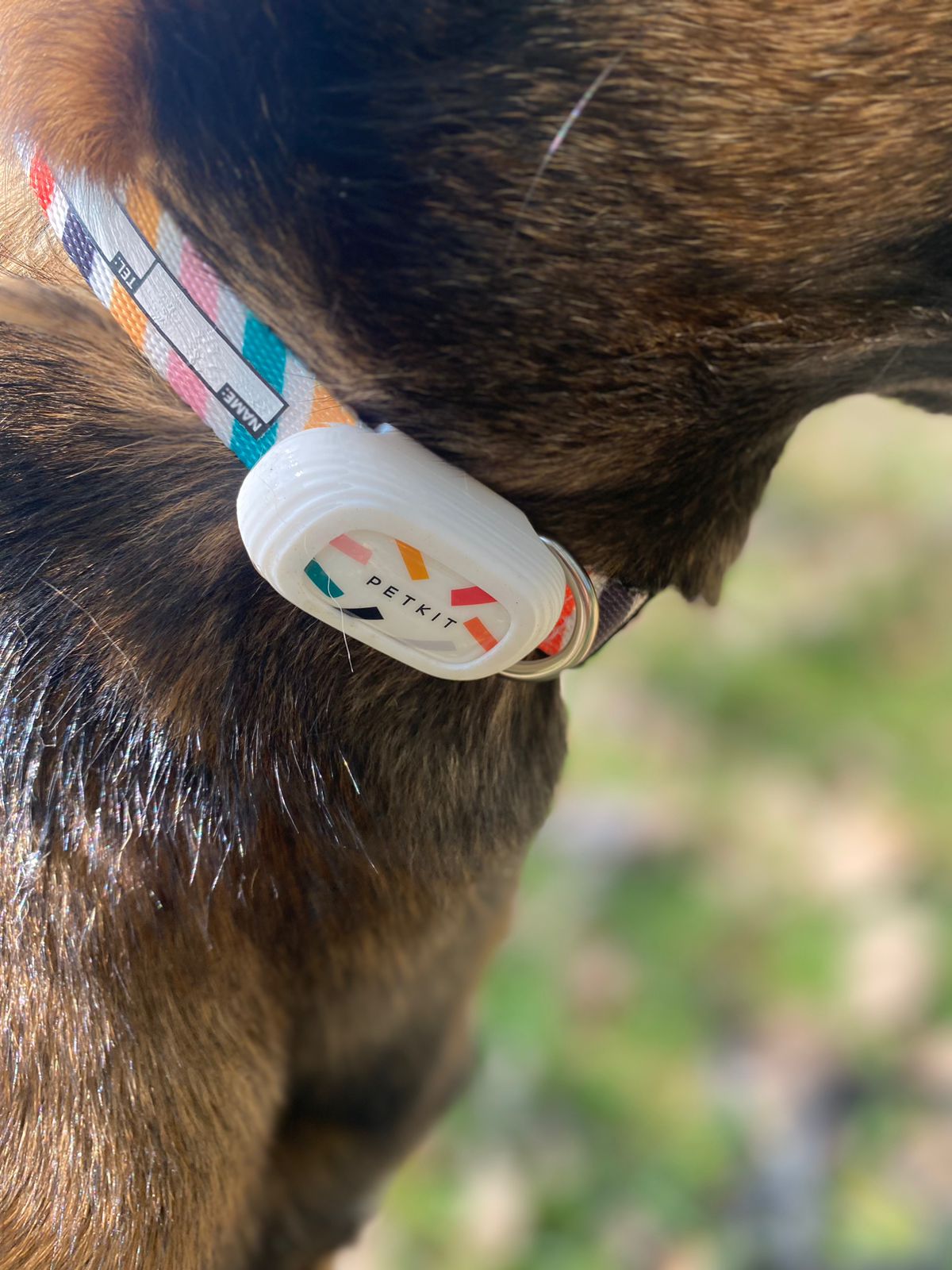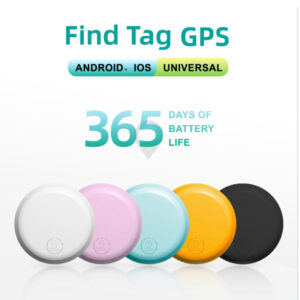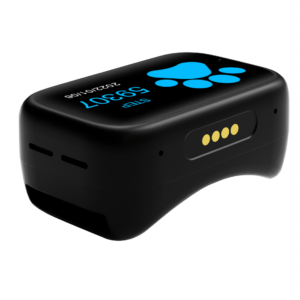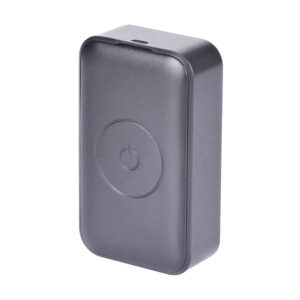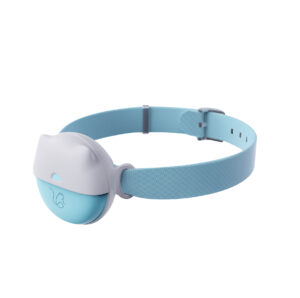GPS vs Microchip vs Bluetooth Tags for Pet Tracking
Quick answer: which tracker actually finds lost pets fastest?
Microchips do not track location; they store owner info for scanning at a vet or shelter. Bluetooth tags (like AirTag) help at short range or when nearby phones detect them. GPS pet trackers use satellites plus cellular networks to give live, long‑range location updates. If your pet goes missing, GPS is the tool that actually gets you to them, while a microchip proves identity once they are found.
GPS vs Bluetooth/AirTag vs Microchip: key differences
| Technology | Range | Typical accuracy | Battery and power | Subscription | Water protection | Ideal use cases | Limits |
|---|---|---|---|---|---|---|---|
| GPS + cellular tracker | City to country (where there is mobile coverage) | About 5–15 m outdoors | Rechargeable battery; life depends on update rate and coverage | Usually yes (data) | Often IP67–IP68 | Finding a lost pet anywhere with coverage; live tracking; geofencing | Needs mobile signal; more power use |
| Bluetooth/AirTag‑style tag | A few meters direct, further via nearby phones | Up to a few meters when in range | Long battery life (coin cell months) | No subscription | Varies by tag | Finding pets around the house, garden, or when other phones pass nearby | No true long‑range on its own; crowd network is unpredictable; anti‑stalking alerts can beep |
| Microchip (RFID) | None (not a tracker) | N/A | No battery (passive) | No | N/A (under the skin) | Permanent ID to reunite you at vet/shelter | Cannot show location; must be scanned to help |
Primary goal, made simple:
- Use GPS for actually finding lost pets.
- Add a microchip for permanent ID.
- Optionally add a Bluetooth/AirTag tag for close‑range homing indoors.
Need long‑range live tracking now? See TailMe Infinity Pro, Agile Pro under Pet Tracking.
Want indoor precision? Add the BLE Beacon.
On a tight budget for close range only? See TailTags (AirTag compatible).
Short range vs long range: what you really trade off
When it comes to keeping a tail on your pet, find‑ability is everything. Short‑range tags shine for battery life and quick homing in the lounge or garden. But if your pet slips the gate and keeps moving, short range becomes the problem: you cannot get to them unless you or someone else with a phone wanders close enough.
GPS trackers are built for the opposite scenario. They use satellites for coordinates and the cellular network to send you that location on demand. You get a live map, can request fresh positions, and follow movement in near‑real time so you can intercept rather than guess.
Battery life, waterproofing, and durability
- Battery life: Faster update rates (for example every 30–60 seconds) consume more power; longer intervals (for example 5–10 minutes) extend life. Use live tracking only when needed.
- Real‑world tip: Many owners start with frequent updates to learn routines, then switch to a practical interval that preserves battery for when it matters most.
- Waterproofing: Pets get wet. Aim for IP67 or IP68. That means rain, puddles, and rolling in wet grass are non‑events.
- Wear and tear: Look for rugged housings and secure collar attachments. Scratches happen; electronics should be protected.
How to actually find a lost pet fast
1) Use a GPS tracker with live location or on‑demand positioning. Get a location, move there, then request a new update to narrow down.
2) Layer senses: once close, switch to sound cues (tracker beep or app ringtone) and visual scanning.
3) Share live tracking with family or neighbours so more eyes help.
4) If your pet is moving, use geofences to trigger alerts and plan your interception route.
Knowing their routine helps too. Many customers start by logging location every 60 seconds to learn where their cat naps or which neighbour the dog visits. After a few days, a calmer update schedule saves battery while still protecting against a true escape.
Which is best for me? Real‑world scenarios
- Escape‑artist dog that bolts through gates
- Best: Infinity Pro or Agile Pro for live tracking, geofencing, and rugged, waterproof build.
- Optional: TailTags on the collar for quick homing in the yard, plus microchip for ID.
- Mostly‑indoor cat that occasionally explores the garden
- Best: Agile Pro with on‑demand updates. Add BLE Beacon for room‑level accuracy indoors.
- Optional: TailTags for quick find under beds or in the garage.
- Farm or smallholding dog with wide roaming
- Best: Infinity Pro or 4G with coverage and smart battery modes.
- Note: Coverage varies by area; confirm your network strength in your region.
- Travel and hiking companions
- Best: Pro or 4G range for robust waterproofing and reliable live tracking on trails with coverage. Pack a power bank and use tracking on demand to extend battery.
- Budget or Android user considering an AirTag alternative
- Best: TailTags (Apple and Android compatible) for short‑range peace of mind at home.
- Reality check: Short‑range tags do not replace GPS for true lost‑pet recovery.
AirTag/Find My vs GPS for pets in 2025: what changed
- Find My networks: Apple and Google have expanded their crowdsourced networks, which helps in dense urban areas. In quiet suburbs or rural zones, detection can be slow or nonexistent.
- Anti‑stalking alerts: Modern phones will alert people to unknown Bluetooth trackers moving with them. Helpful for safety, but it can cause beeps or alerts that reveal the tag and may lead to removal.
- Range and update control: Bluetooth tags cannot request a fresh location on demand; you wait for a passer‑by. GPS trackers let you ask for a new fix instantly.
- Waterproofing and fit: Dedicated pet GPS trackers are built for collars and wet adventures; generic tags vary.
- Bottom line: For real lost‑pet recovery, GPS remains the dependable option. Use a Bluetooth/AirTag tag as a companion, not a replacement.
Coverage and battery 101: NB‑IoT, 2G/4G
- NB‑IoT: Even lower power and deep indoor reach, but update speeds can be slower; availability varies by region.
- 2G/4G fallback: Many trackers use multiple network types to keep you connected when one band is weak. 2G is being phased out!
- South Africa note: NB‑IoT coverage is expanding. TailMe Pro trackers are designed to select the best available network automatically. Check your area coverage before purchase.
Quick setup for best results
- Create 1–2 sensible geofences (home, favourite park).
- Set a balanced update rate for daily life; use live tracking only when searching.
- Enable sound/beep for close‑range locating and keep the volume on your phone up.
- Share access with family so anyone can help immediately.
- Keep the collar snug and check the attachment each week.
- Top up the battery proactively before big outings.
Field‑tested tips to find a lost pet
- Search when it is quiet: dawn, dusk, and late evening boost your chances with shy cats and nervous dogs.
- Use familiar sounds and smells: a treat bag shaken, a leash jingle, or your car door gently closing can draw them out.
- Bring a torch at night to catch eye shine under cars and bushes.
- Print quick flyers with a clear photo and your number; alert neighbours and local groups.
- If your pet is skittish, do not chase. Sit nearby, speak softly, and let them approach.
FAQs
- Can a microchip track my pet’s location?
No. A microchip is passive ID only. It is scanned by a vet or shelter to get your contact details. - GPS vs AirTag for finding a lost pet — which is better?
GPS. It gives on‑demand, long‑range locations you can follow. AirTag/Bluetooth can help nearby or in busy areas but is unreliable for true escapes. - Do pet GPS trackers need a subscription and why?
Location data travels over mobile networks and is processed in the cloud. You need a working sim card. - How accurate is GPS and how do I home in?
Typically 5–15 m outdoors. Get to the pin, then request a fresh update and use sound/visual cues to zero in. - What waterproof rating should I look for?
IP67 or IP68 for real‑world puddles, rain, and rolling in wet grass. - What settings extend battery life?
Use longer routine intervals, enable live tracking only when searching, and turn on power‑saving modes.

